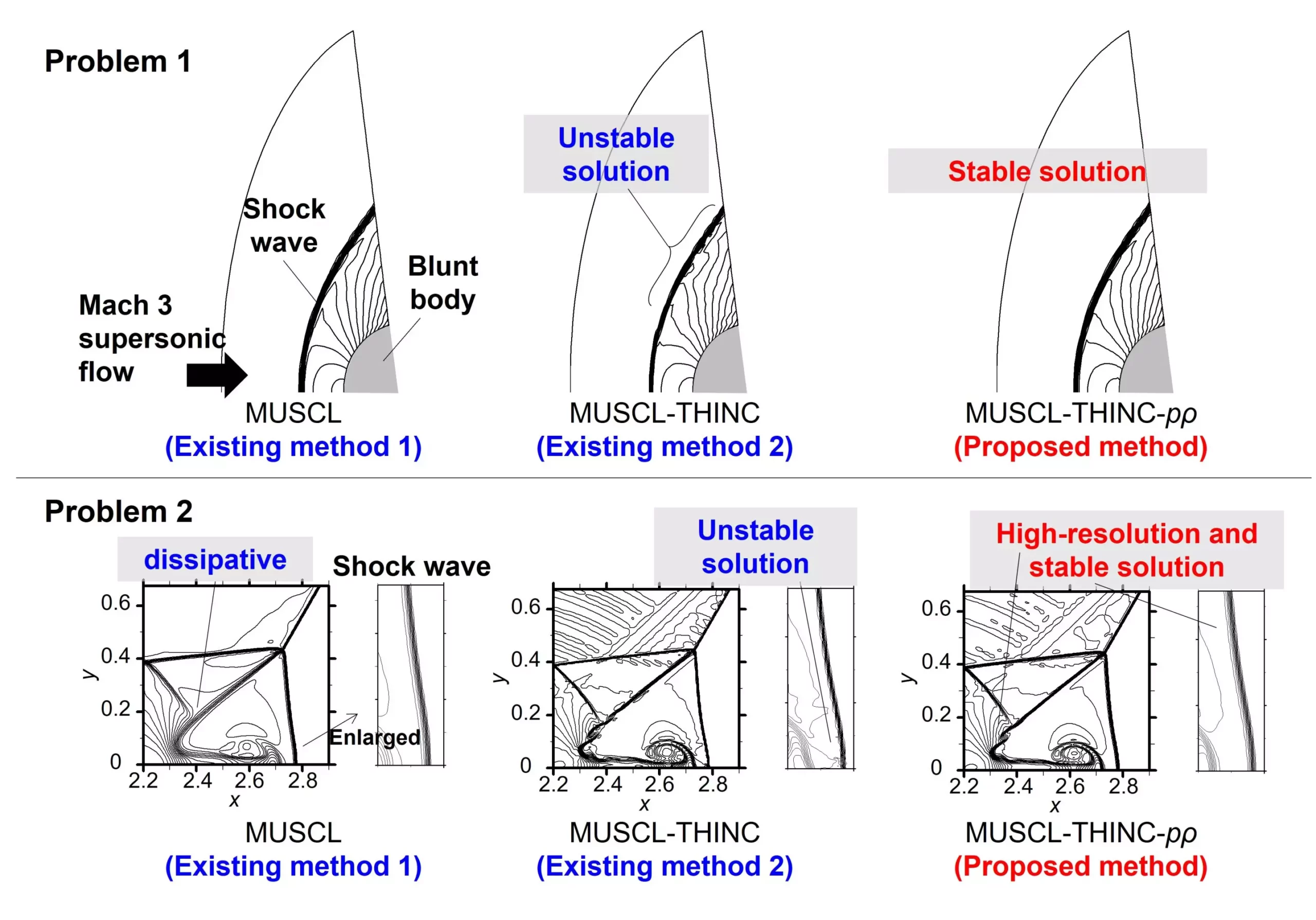A notable breakthrough in fluid dynamics has emerged from a dedicated team of scientists, who have successfully engineered a pioneering hybrid method for simulating both steady and unsteady single-phase compressible flows. Their innovative approach, detailed in the esteemed journal Physics of Fluids, is not merely an incremental improvement but rather a substantial leap forward that has the potential to transform applications across various engineering domains. This novel technique harnesses the power of finite volume methods, specifically coupling the well-regarded monotonic upstream-centered schemes for conservation laws (MUSCL) with the tangential hyperbolic interface capturing (THINC) method, culminating in the development of what they have termed T-MUSCL.
The significance of this research cannot be overstated. As it stands, accurately simulating fluid flows—particularly those involving gases where density variations are substantial—poses a formidable challenge due to the complex phenomena that arise, such as shock waves and discontinuities. These challenges are particularly pronounced in fields like aerospace engineering, where even minor errors can lead to catastrophic consequences. The T-MUSCL hybrid scheme boldly addresses these challenges head-on by prioritizing precision and high-resolution outcomes in its simulations.
Unpacking the Technical Brilliance of T-MUSCL
The T-MUSCL scheme is not just a rehashing of existing models; it ingeniously optimizes the handling of nonlinearity and discontinuity, tailoring its approach based on the nature of the flow being simulated. The key innovations lie in the employment of two pivotal parameters—the nonlinearity-weighted parameter and the slope-ratio-weighted parameter—that enhance the scheme’s stability and accuracy. While traditional MUSCL has delivered commendable results, particularly in handling fundamental flows featuring shock waves, it typically struggled with severe shocks and compromised the fidelity of simulations due to excessive numerical dissipation.
By contrast, the T-MUSCL method shines where conventional models falter. It is adept at resolving both weak and strong shock waves, allowing for a nuanced and robust simulation environment. This flexibility is revolutionary in scenarios of fluid dynamics that were previously relegated to less accurate outcomes or cumbersome methods. Associate Professor Keiichi Kitamura’s assertion that their method offers “high-resolution and robust results” underlines the T-MUSCL’s ability to simplify complex issues in fluid dynamics, making it more accessible for a broader audience of researchers and engineers.
Practical Implications and Future Directions
Perhaps the most exciting aspect of this research is its potential for real-world applications. As industries ranging from aerospace to automotive engineering continue to evolve, the ability to accurately simulate compressible flows becomes increasingly critical. The T-MUSCL framework promises to be a versatile tool that can be integrated seamlessly into existing computational methodologies without imposing additional complexity. This lowers the barrier to entry for engineers striving to apply sophisticated simulations in their work, thus broadening the potential user base.
The team’s ambition extends beyond academic curiosity. There is a concerted effort to apply their method to tangible engineering problems, which will not only validate their research but also enhance our collective understanding of compressible flow dynamics. Lead researcher Gaku Fukushima emphasizes this goal, stating their desire to deepen insights into shock wave behavior—an area that has significant implications for the design and safety of various engineering products.
Revealing the Gap in Computational Methods
One of the standout reflections from this research is its critique of the current state of numerical methods in engineering. While a plethora of sophisticated computational techniques have emerged in academic circles, a glaring disconnect remains between these complex methods and those practically employed in engineering applications. The T-MUSCL seeks to bridge this divide with its compelling combination of simplicity and precision.
This bridge is essential not merely for academic exploration but for fostering advancements across diverse industries. By creating a foundation upon which engineers can rely, T-MUSCL stands to contribute significantly to the future of fluid dynamics research and its applications, ensuring that innovations lead to safer, more efficient engineering practices.
In a world where the accuracy of simulations can dictate the success of engineering projects, the T-MUSCL method emerges as a beacon of hope. It exemplifies not just a new technique but a philosophy of accessibility and excellence in the pursuit of understanding the intricate dance of fluid dynamics. With its introduction, the field expects to see advancements that will redefine standards and inspire future research, making profound contributions to technology and science in the years to come.

